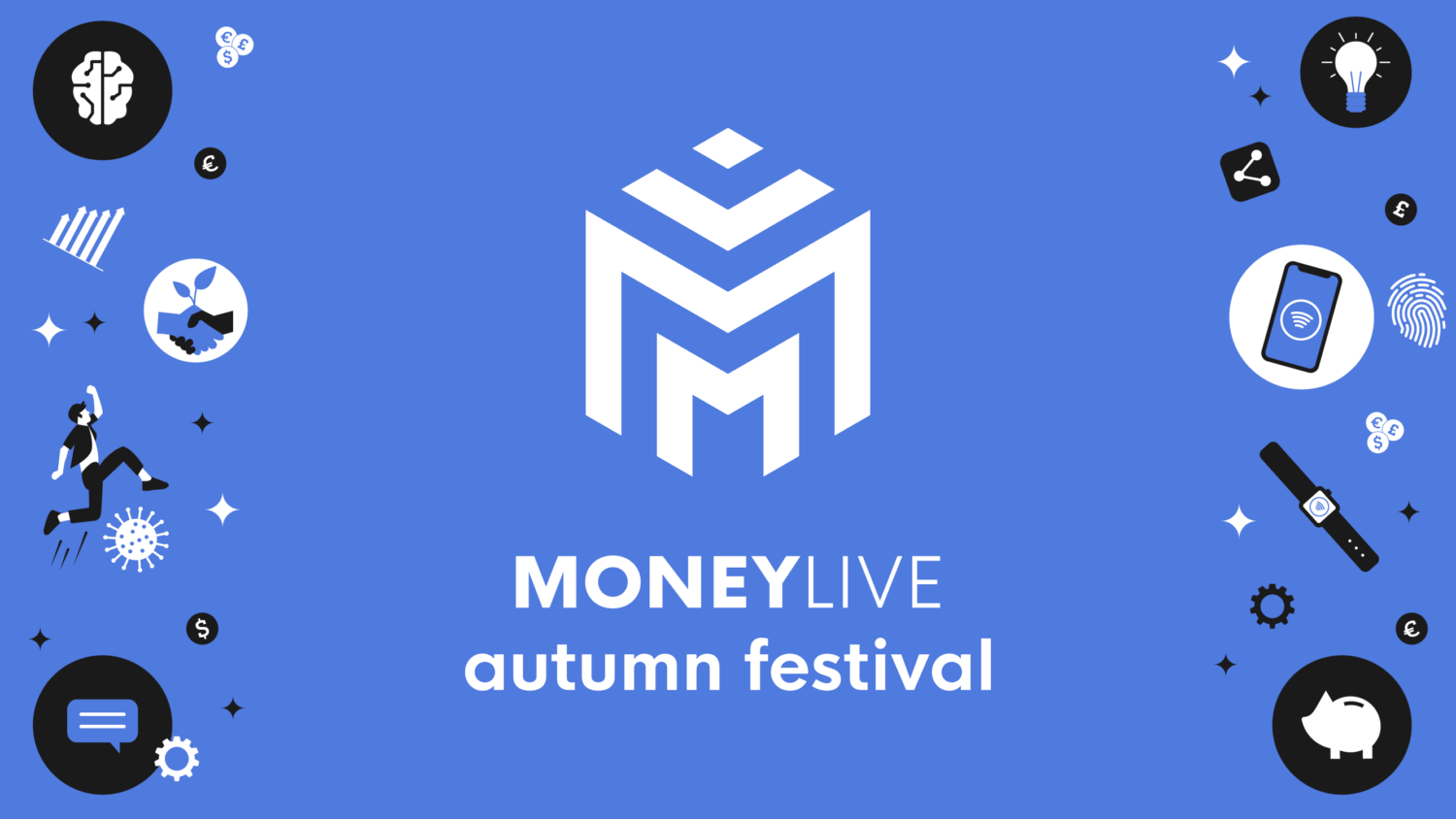
TV PANEL SUMMARY
Unlocking the power of data-driven banking: making better decisions to drive strategic transformation
In an uncertain and fast-changing world, it’s time for banks to future-proof their strategies by investing in data-centric capabilities so they can make smarter decisions. That was the message from MoneyLIVE’s recent “Unlocking the power of data-driven banking” webinar where, as Shashank Khare, Head of Group Strategy at Lloyds Banking Group, pointed out banks need to shift to a “flexible and agile strategy rather than a monolithic five-year plan”.
The raw material of this transformation is data. “Data, like oil, is a natural resource,” said Matthew Sattler, Director of Business Development & Data Science, Data & Analytics at HSBC. “And just like oil, you have to take the raw material and process it to make it usable.”
A data-rich world
There is no shortage of this particular resource. Data is everywhere in our connected world – although, for banks in particular, this abundance is not new. Indeed, according to Tiffany Carpenter, Head of Customer Intelligence at SAS UK & Ireland, banks have always had access to tremendous amounts of customer and transactional data and in many ways are more data-rich than the likes of Google and Facebook.
“A lot of people worry about the amount of data the likes of Google and Facebook have, yet the data points the tech giants have are just a fraction of the data your bank holds about you…banks have the deepest and most personal data set of any institution”
“A lot of people worry about the amount of data the likes of Google and Facebook have, yet the data points the tech giants have are just a fraction of the data your bank holds about you,” said Carpenter. “In fact, banks have the deepest and most personal data set of any institution but as a customer you rarely receive those personalised and tailored offers you would expect from those other institutions. This means there’s a huge opportunity to exploit those huge data sets and deliver on the customer experience.”
“A critical component is data engineering to break the silos…you need a common landing zone for different data sets and applications so they can be consolidated in the right format and right quality.”
The first step is to collate and consolidate data. “A critical component is data engineering that is solid and sound to break the silos,” said Angel Serrano, Head of Data Science at Santander. “You need a common landing zone for different data sets and applications so they can be consolidated in the right format and right quality.”
However, as Tiffany Carpenter of SAS pointed out, this consolidation effort risks missing the point.
“The biggest challenge for the banks is meeting changing customer expectations,” she said. “Do not wait until all of your data in is one place. Look at what you want to achieve and what data you need for that and you may find you already have it.”
New competition
“As an industry there’s a risk we’re going the Nokia way, with incremental change from a Nokia 311 to the Nokia 900, and the danger is someone comes in and slams down an iPhone.”
It seems banks are up for this challenge. “Banks are being ambitious in terms of the immense effort and investment they are putting into this,” said Shashank Khare of Lloyds Banking Group. “But there’s a quantum duality to this because a lot of the use cases are still incremental.”
Rather than just “pushing the envelope a little bit more”, Khare said the technology and data now gives banks the opportunity to reinvent the model, radically reshape processes and transform customer experiences. “As an industry there’s a risk we’re going the Nokia way, with incremental change from a Nokia 311 to the Nokia 900, and the danger is someone comes in and slams down an iPhone,” he said.
Tiffany Carpenter of SAS agreed. “Since 2008 we have had increased competition in the market from challenger banks and FinTech but I think we are about to see a new wave of disruption from the Apples, Amazons and Googles of the world and they are the ones that will come in with something completely new.”
“We really need to rebuild to meet the expectations of this new digital everything-at-our-fingertips world but that’s an ambitious goal and an ambitious investment.”
To respond to this, banks will have to fundamentally reshape their systems and processes. “You really have to rebuild,” said Matthew Sattler Director of Business Development & Data Science, Data & Analytics, HSBC. “Technology is enabling us to have scalable architecture that allows us to be data-centric but we have this legacy system built over time. We really need to rebuild to meet the expectations of this new digital everything-at-our-fingertips world but that’s an ambitious goal and an ambitious investment.”
Trust: treading carefully
With the right systems, with data in one place and advanced analytics helping sift out signals from the noise, banks will increasingly be able to tailor products and services to a segment of one. With a detailed understanding of the customer, banks will be able to anticipate unmet needs and respond with highly relevant and personalised offers and advice.
“If we can identify you may need a mortgage in six months then we can proactively let you know about a new deal and a product to suit you,” said Angel Serrano of Santander. “It’s about being more proactive.”
Timing is of the essence, however. “Most banks are painstakingly slow at accessing the data, filtering it and transforming it, building the models, looking for patterns and insights and deploying it into a decision,” said Tiffany Carpenter of SAS, who said this process can take weeks or even months. “By the time they reach that decision, it may no longer be relevant and the customer ends up being targeted with products and services they may have bought weeks ago. We really need to speed up that process so the recommendations are in the moment, contextual and timely.”
“Banks are privileged because customers do trust us with their data and to do the right thing.”
There is a health warning to such a pro-active approach, however. “You have to tread with care on this,” said Shashank Khare of Lloyds. “If you get an alert because you were looking at Rightmove, it feels like a violation of privacy. Banks are privileged because customers do trust us with their data and to do the right thing. We have to explore the boundaries of this carefully.”
AI: empowering humans
“It’s the partnership between AI and humans that allows us to make better decisions.”
Artificial Intelligence and Machine Learning are vital to making better decisions. “What AI and machine learning do well is scan through millions of rows of data and as humans we do not do that well, at scale or fast,” said Matt Sattler of HSBC. “What humans do well is empathy, interactions and strategic decision-making. So there’s a symbiotic relationship and it’s this partnership between AI and humans that allows us to make better decisions.”
“Advanced analytics are meaningless if there’s no-one with the ability to interpret the results and make decisions.”
Angel Serrano of Santander agreed that humans shouldn’t see AI as a threat, but rather an opportunity. “It’s about interpretation,” he said. “Advanced analytics are meaningless if there’s no-one with the ability to interpret the results and make decisions.”
And it’s vital that the technology is clearly aligned with business outcomes. “Our job is not to make the next data science experiment but to really bring it back to the business,” said Matthew Sattler of HSBC.
“At SAS, we talk about a framework called FATE: fairness, accountability, transparency and explain-ability that can help business stakeholders understand the inputs and outputs.”
Even so, banks need to think very carefully before unleashing the power of AI and machine learning. Stakeholders need to understand how the algorithms are reaching decisions, even if they don’t understand the algorithm itself. “At SAS, we have adapted the FATE framework and we talk about: fairness, accountability, transparency and explain-ability in AI projects” said Tiffany Carpenter. “This framework can help business stakeholders understand the inputs and outputs and make sure they can be readily explained and understood.”
When it comes to making this work, Shashank Khare of Lloyds Banking Group said there were three big hurdles banks have to clear: getting their data into shape, getting the right models into place and then having a culture that can absorb all of that. “This is the tough one,” he noted.
One thing is clear, however. Banks understand the power of data to transform operations and outcomes for customers. The future may be uncertain but data and advanced analytics look set to help banks navigate their way to a smarter, data-driven future.
WEBINAR PRODUCED IN PARTNERSHIP WITH
Banking as we know it is disappearing, and the entire financial ecosystem is undergoing radical change. Digitalisation, fintech, regtech, open banking, data privacy and regulatory compliance technologies are all playing a part. SAS believes that surviving banks will be hyperintelligent, AI-driven organisations that can provide personalised, trusted customer experiences, as well as meet risk and compliance mandates. SAS delivers proven value, and we can help you unlock AI’s vast potential for your digital transformation.
SAS is used by over 90% of the top 100 global banks to make the best decisions – today and in the future.
While you’re here…
Check out our upcoming event!

MoneyLIVE Autumn Festival
Virtual Episodes across October & November
Broadcasting throughout October and November, our 5 virtual episodes see leading experts take to the screen and dive into the hottest topics in banking and payments, including agility and resilience, digital identities, purpose-led banking, social platforms and the future of FinTech.
Speakers include:
- Matt Hammerstein, Chief Executive Officer, Barclays UK
- Chris Pitt, Chief Executive Officer, First Direct
- Tracey Davidson, Deputy Chief Executive Officer, Handelsbanken UK
- Tom Wolfenden, Head of Retail Banking, HSBC
Stay in the loop with MoneyLIVE
Subscribe to our newsletter to receive news, insights and special offers.
